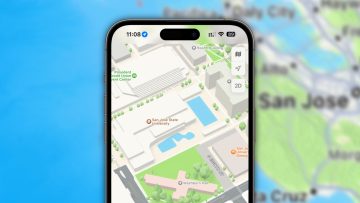Samsung, Apple, and Google are going to launch new flagship smartphones this year — in that order. The Galaxy S8 is expected in mid-April, while the iPhone 8 and Pixel 2 will arrive in September and October, respectively. While all three phone families will have distinct features, they’ll also be similar when it comes to other characteristics. A new report tells us that the three flagships will most likely share the key component of a 2017 smartphone: an OLED display.
DisplayMate’s Raymond Soneira on Tuesday published a report that explains in great detail the advantages of OLED displays, focusing on these three devices, all expected to pack OLED screens. In fact, Soneira says that it’s very likely that Samsung Display will mass-produce OLED screens for all three smartphones this year, as competitors are trailing behind when it comes to OLED screen manufacturing.
Does that mean that all three smartphones will offer the exact same display performance and quality? Yes and no. Aside from hardware, there’s also software to take into account.
Soneira expects all phones to have OLED screens that will at least match the quality of the Galaxy Note 7’s screen, a phone that DisplayMate says it has the best display in a smartphone.
According to the display professional, the Galaxy S8 will have a flexible OLED display that will have a wider color gamut than the Galaxy Note 7 — it’s expected to support DCI-P3, just like 4K TVs and the iPhone 7.
Because the Galaxy S8 is supposed to have an all-screen design, you can expect various changes when it comes to resolution and aspect ratio. Soneira expects the Galaxy S8 to have an aspect ratio of 2.0, and screen resolution of 2880 x 1440, 3840 x 1920 or 4320 x 2160.
The iPhone 8, meanwhile, is expected to have a curved OLED screen. The handset will probably support DCI-P3, just like its predecessor. Soneira also expects it to deliver an aspect ratio of 2.0 (up from 1.78). That means resolution could go up to 2,160 x 1080 or 2880 x 1440. Apple is expected to still keep its Retina display standard in place, so resolution has to go up when the screen increases. And the iPhone 8 is expected to feature a large, edge-to-edge curved display.
Finally, the Google Pixel 2 is expected to stick with a flat OLED screen, which means it might be similar to its predecessor in terms of screen specs (size, aspect ratio, pixel-per-inch density). However, Google is expected to improve the color gamut of the Pixel 2, and offer users true DCI-P3 gamut support — something the current Pixel doesn’t support.
One thing that isn’t clear is whether any of these phones will outclass the Galaxy Note 7’s brightness — that’s high Peak Brightness greater than the 1,000 nits that the latest OLED can reproduce.
Soneira’s extensive report on OLED technology available to this year’s top smartphones is available at this link.







